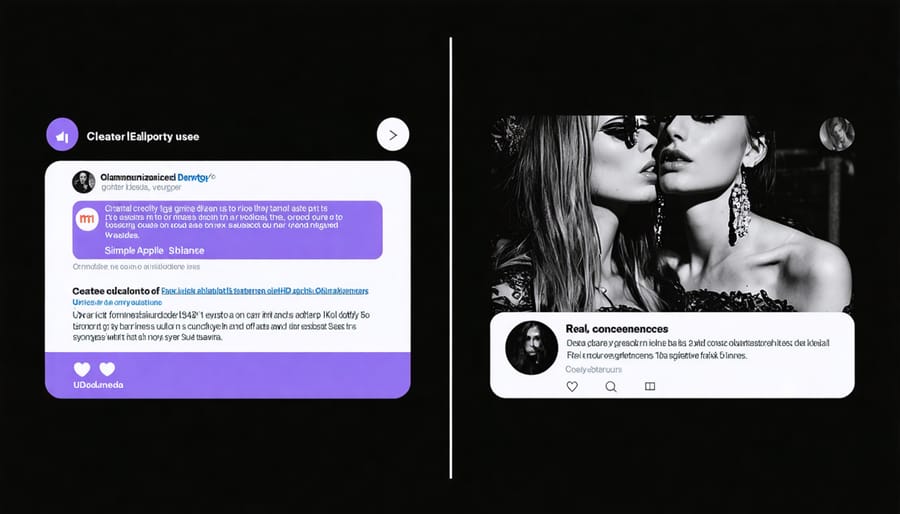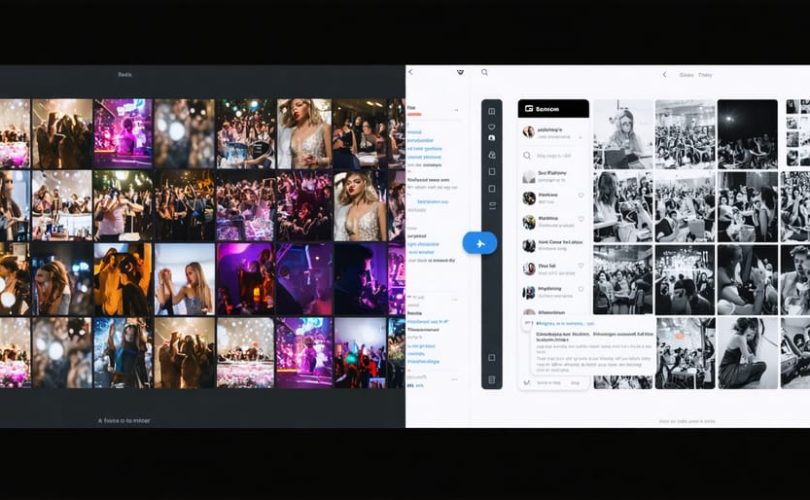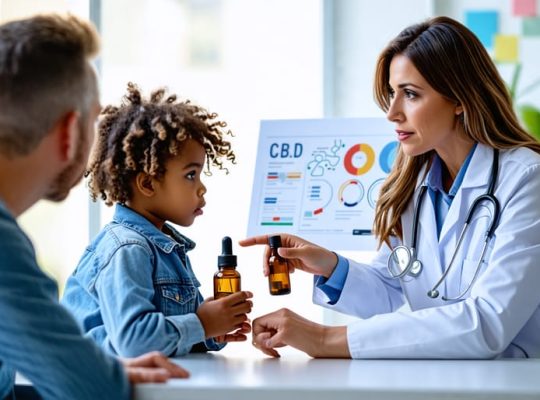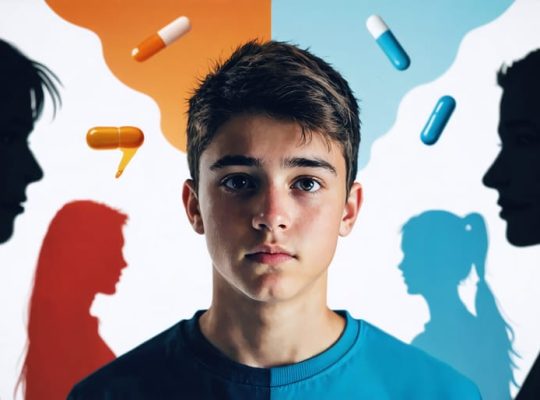In an age where digital screens and social media dominate our children’s daily lives, the relationship between media consumption and substance use has become increasingly complex and concerning. Recent studies show that teenagers who spend more than 6 hours daily on social media are 3.5 times more likely to develop substance use problems compared to their peers with moderate media usage.
As parents and caregivers, we’re navigating uncharted territory where viral TikTok challenges may glorify risky behaviors, while Instagram influencers subtly promote alcohol and drug culture to impressionable minds. The impact extends beyond direct exposure to substance-related content – excessive screen time itself can trigger dopamine responses similar to those observed in substance use, potentially priming young brains for addictive behaviors.
Understanding this connection isn’t about inducing fear – it’s about empowering families with knowledge and practical strategies. The good news is that mindful media consumption, combined with open family dialogue, can significantly reduce these risks. By recognizing how modern media shapes our children’s perceptions and behaviors around substances, we can take proactive steps to protect their well-being while maintaining healthy relationships with technology.
Let’s explore the intricate relationship between media exposure and substance use risk, along with evidence-based strategies to help our children thrive in today’s digital landscape.
How Digital Media Shapes Children’s Attitudes Toward Substances
Social Media’s Role in Normalizing Substance Use
Social media platforms have become a powerful force in shaping young people’s perceptions of substance use. Recent studies have shown that social media’s influence on substance use can be particularly strong during adolescence, when young people are most susceptible to peer pressure and social messaging.
Platforms like Instagram, TikTok, and Snapchat often present substance use in a casual, glamorized light. Users share party scenes, drinking games, or “funny” intoxicated moments, creating an impression that these behaviors are normal and widely accepted. What’s particularly concerning is how these posts rarely show the negative consequences of substance use, instead focusing on the perceived social benefits and entertainment value.
Dr. Sarah Martinez, a child psychologist, explains: “When teens constantly see their peers or influencers posting about substance use without apparent consequences, it can create a distorted view of reality. They might think, ‘Everyone else is doing it, so it must be okay.'”
The algorithm-driven nature of social media can amplify this effect. Once a user engages with content related to substance use, they’re likely to see more similar content, creating an echo chamber that further normalizes these behaviors. This can be especially problematic for young people who are already feeling vulnerable or seeking ways to cope with stress or anxiety.
Parents and caregivers can help by maintaining open conversations about what children encounter online, discussing the reality behind social media posts, and helping young people develop critical thinking skills to question the messages they receive through these platforms.

Entertainment Media and Substance Portrayal
Entertainment media plays a significant role in shaping young people’s perceptions of substance use. Movies, TV shows, and online content often portray drug and alcohol use in ways that can normalize or even glamorize these behaviors, particularly for impressionable viewers.
Popular media frequently shows substance use without realistic consequences. Characters may drink heavily at parties without experiencing hangovers, or use drugs recreationally without facing health, legal, or personal problems. This incomplete portrayal can create misleading expectations about substance use, especially among teenagers and young adults who are still developing their understanding of risk and consequence.
Social media platforms and streaming content have intensified this challenge. Short-form videos on platforms like TikTok and YouTube may present substance use as humorous or trendy, while neglecting to show the serious potential outcomes. Celebrity influence through social media can also impact young viewers when stars appear to celebrate or make light of substance use.
However, some modern media productions are taking a more responsible approach. We’re seeing more shows and movies that explore the complex reality of addiction, recovery, and the impact of substance use on families and communities. These narratives can serve as valuable conversation starters between parents and children about the real-world effects of drug and alcohol use.
Parents can help by watching media alongside their children when possible and discussing how substance use is portrayed. This creates opportunities to address misconceptions and reinforce healthy attitudes about drugs and alcohol. Consider using examples from favorite shows or movies to start meaningful conversations about making responsible choices.
Warning Signs Your Child Is at Risk

Digital Content Red Flags
When monitoring your child’s digital media consumption, be alert to content that glorifies or normalizes substance use. Watch for social media accounts, YouTube channels, or online personalities that frequently feature alcohol or drug use in a casual or celebratory manner. Music videos and streaming content that portray substance use as cool or consequence-free are particularly concerning.
Pay attention to online challenges or trends that may involve dangerous substances or risky behavior. Gaming content that includes references to drugs, either as power-ups or casual elements of gameplay, can normalize substance use for young players.
Be mindful of targeted advertisements, especially on social media platforms, that promote alcohol, vaping products, or prescription medications. Some influencers may subtly promote substances through sponsored content or lifestyle posts.
Also watch for content that shares detailed information about obtaining or using drugs, including seemingly innocent “life hack” videos that could be misused. Private messaging groups or chat rooms focused on substance use are major red flags that require immediate attention.
Remember that children may encounter this content accidentally, so maintaining open communication about what they see online is crucial.
Behavioral Changes to Monitor
Parents should stay alert to behavioral changes that might signal media’s influence on substance-related attitudes. Watch for increased references to drugs or alcohol in everyday conversations, especially if your child is quoting media sources or celebrities who glamorize substance use. Changes in social media activity, such as following accounts that promote drug culture or sharing content that normalizes substance use, can be early warning signs.
Notice if your child becomes defensive about their media consumption or shows sudden interest in movies, music, or social media accounts that frequently feature substance use. This could indicate they’re being influenced by content that downplays the risks of drugs and alcohol. Understanding how peer pressure and substance use interact with media exposure is crucial for early intervention.
Other red flags include changes in friend groups, especially if new friends share concerning content about substances, decreased interest in previous activities, or using substance-related slang learned from media. Watch for shifts in attitude toward drugs, from concern to curiosity or casual acceptance, which often reflects media influence.
Protective Strategies for Parents
Setting Healthy Media Boundaries
Setting healthy media boundaries is crucial for protecting young people from potentially harmful content that could influence their attitudes toward substance use. Start by establishing clear screen time limits and creating designated media-free zones and times in your home, such as during meals or before bedtime.
Work collaboratively with your children to develop a family media agreement that outlines when, where, and how digital devices can be used. This approach helps children feel involved in the decision-making process and more likely to follow the rules. Consider using parental control tools and content filters to restrict access to inappropriate content, but remember that open communication is equally important.
Create alternative activities that promote face-to-face interaction and physical activity. This might include family game nights, outdoor adventures, or creative projects that help reduce screen dependency. Monitor the types of media your children consume and discuss content that glorifies substance use, helping them develop critical thinking skills about media messages.
Be consistent with enforcing boundaries while remaining flexible enough to adjust rules as children mature. Model healthy media habits yourself – children are more likely to respect boundaries when they see adults doing the same. Remember that the goal isn’t to completely restrict media access but to foster a balanced, mindful approach to digital consumption that supports overall wellbeing.
Building Media Literacy Skills
Teaching children to think critically about media messages is crucial in today’s digital age, especially when it comes to substance use portrayals. The impact of social media on children can be significant, making it essential to help them develop strong media literacy skills.
Start by watching media content together and asking open-ended questions: “Why do you think they showed alcohol in this scene?” or “How does this advertisement make drug use look?” This encourages children to think deeper about the messages they’re receiving rather than passively accepting them.
Help your child identify advertising techniques used to glamorize substances. Point out product placement in movies, sponsored content on social media, and celebrity endorsements. Teach them to recognize when they’re being marketed to and understand the motivations behind these messages.
Create a safe space for discussions about what they see online and in traditional media. When they encounter substance-related content, use it as a teaching opportunity to separate fact from fiction. Share age-appropriate facts about the real consequences of drug use, contrasting them with media portrayals.
Encourage your child to question sources: “Who created this content?” “What is their goal?” “Is this information trustworthy?” These critical thinking skills will serve them well beyond just evaluating substance-related messages.

As we’ve explored throughout this article, the relationship between media consumption and drug use is complex but manageable with the right approach. By staying informed and engaged in our children’s digital lives, we can help protect them from potential risks while fostering healthy media habits.
Remember that prevention starts with open communication. Regular conversations about media content, setting reasonable boundaries, and modeling positive behavior can make a significant difference in our children’s choices and well-being.
Don’t hesitate to take action if you notice warning signs. Reach out to healthcare providers, school counselors, or mental health professionals for guidance. Many families face similar challenges, and support is available.
By working together – parents, educators, and healthcare providers – we can create a safer digital environment for our youth while reducing their risk of substance use. Small steps taken today can lead to significant positive outcomes tomorrow.
Let’s commit to being present, staying informed, and taking proactive steps to protect our children’s future. With awareness, compassion, and consistent effort, we can help our young people navigate both the digital world and real-life challenges successfully.







